Turkey Historical Sites | Discover the Rich History of Turkey
Turkey is a country that boasts a rich history and cultural heritage that spans thousands of years.
Located at the crossroads of Europe and Asia, Turkey has been home to many civilizations throughout history, including the Hittites, Greeks, Romans, Byzantines, and Ottomans. Each of these civilizations has left its mark on the country's culture and architecture, making Turkey a fascinating destination for history buffs and cultural enthusiasts alike.
This article presents a compilation of Turkey's historical sites, offering valuable insights for travelers intending to explore the rich heritage of this captivating country.
Why You Should Visit Turkey?

One of the most significant periods in Turkey's history was the Ottoman Empire, which lasted from the 14th century until the early 20th century. During this time, Istanbul (then known as Constantinople) was one of the world's most important cities and served as the capital of the Ottoman Empire. Many of Istanbul's most famous landmarks date back to this period, including the Topkapi Palace, Hagia Sophia, and Blue Mosque.
Turkey is also home to many ancient ruins that offer a glimpse into its past. The city of Ephesus is one such site; it was once a bustling port city in ancient Greece and is now home to some of the best-preserved ruins in the world. Other notable historical sites in Turkey include Troy (the setting for Homer's epic poem The Iliad), Pergamon (a city known for its impressive library), and Hierapolis (a Roman spa town with well-preserved ruins).
In addition to its rich history, Turkey also has a vibrant culture that is reflected in its art, music, cuisine, and traditions. Turkish cuisine is renowned for its use of fresh ingredients and bold flavors; dishes like kebabs, baklava, and Turkish delight are popular around the world. Traditional Turkish music features instruments like the oud (a stringed instrument similar to a lute) and darbuka (a type of drum), while Turkish art often incorporates intricate patterns and designs.
Top Historical Sites in Turkey
1. Hagia Sophia

Hagia Sophia is one of the most iconic landmarks in Turkey and a true testament to the country's rich history. Originally built as a Christian cathedral in 537 AD, it was later converted into a mosque during the Ottoman Empire and finally transformed into a museum in 1935. The building's stunning architecture is a blend of Byzantine and Islamic styles, with its massive dome and intricate mosaics leaving visitors in awe.
One of the most fascinating aspects of Hagia Sophia is its ability to reflect the changing cultural landscape of Turkey over time. As a Christian cathedral, it was considered one of the most important religious sites in the world, with emperors from across Europe coming to pay homage. Later, as a mosque, it became an important symbol of Ottoman power and influence. Today, as a museum, it serves as a reminder of Turkey's diverse cultural heritage.
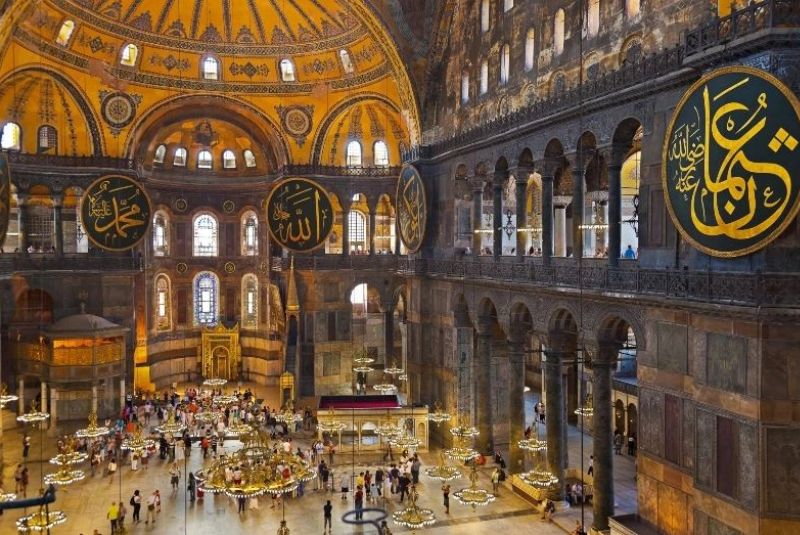
Visitors to Hagia Sophia can explore its many rooms and galleries, including the main prayer hall which features stunning calligraphy and intricate tile work. The building also houses an impressive collection of artifacts from both its Christian and Islamic periods, including ancient mosaics and religious relics.
Despite being over 1,500 years old, Hagia Sophia remains one of Turkey's most popular tourist attractions. Its timeless beauty and historical significance make it an essential stop for anyone interested in exploring the country's rich cultural heritage. Whether you're interested in architecture, religion or history, there is something for everyone at this incredible site.
2. Ephesus
Ephesus is one of the most fascinating historical sites in Turkey, and it is a must-visit destination for anyone interested in ancient civilizations. Located near the modern-day city of Selcuk, Ephesus was once a thriving port city that played a significant role in the development of Western civilization. The city was home to some of the most impressive architectural wonders of its time, including the Temple of Artemis, one of the Seven Wonders of the Ancient World.
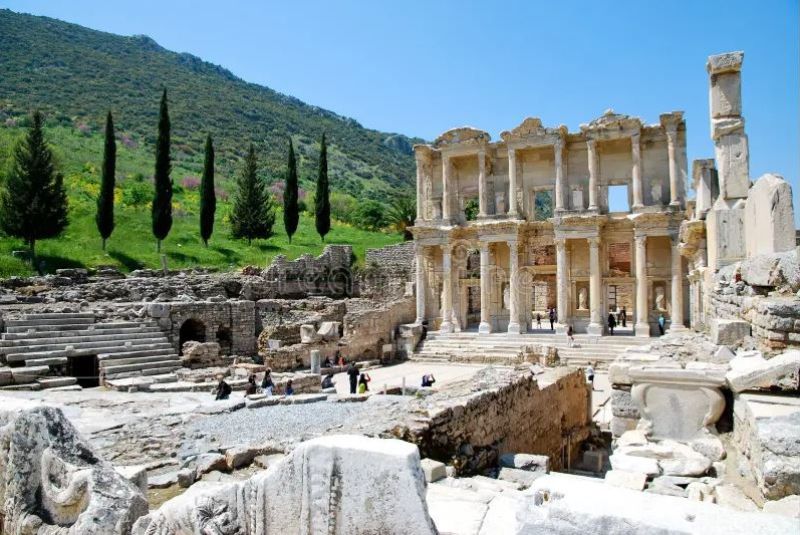
Ephesus was also an important center for early Christianity and was visited by St. Paul on several occasions. The city's most famous landmark is undoubtedly the Library of Celsus, which was built in honor of a Roman senator who had been instrumental in funding many public works projects throughout the region. The library's façade is adorned with intricate carvings and statues that depict various mythological figures and historical events.
One of the most impressive features of Ephesus is its well-preserved amphitheater, which could seat up to 25,000 people. This massive structure was used for gladiatorial contests and other public events during ancient times and remains an awe-inspiring sight to this day. Visitors can also explore the ruins of several other important buildings, including public baths, temples, and marketplaces.
3. Topkapi Palace
Topkapi Palace is one of the most iconic historical sites in Turkey. Located in Istanbul, it served as the primary residence of the Ottoman Sultans for over 400 years. The palace is a stunning example of Ottoman architecture and design, with its intricate tile work, ornate domes, and sprawling courtyards.
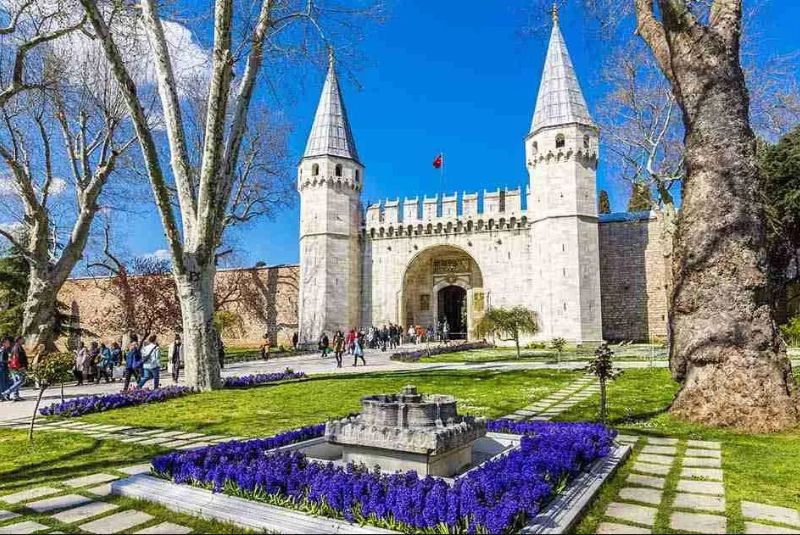
One of the most fascinating aspects of Topkapi Palace is its vast collection of artifacts and treasures. The palace houses an impressive array of Islamic art, including calligraphy, ceramics, and textiles. Visitors can also view priceless jewels and precious stones, such as the famous Spoonmaker's Diamond.
Another highlight of Topkapi Palace is its harem section. This area was reserved for the Sultan's family and concubines and was strictly off-limits to outsiders. Today, visitors can explore this section of the palace and get a glimpse into what life was like for the women who lived there.
In addition to its historical significance, Topkapi Palace also offers stunning views of Istanbul's skyline. From its hilltop location overlooking the Bosphorus Strait, visitors can take in panoramic views of both Europe and Asia.
4. Cappadocia
Cappadocia is a unique historical site in Turkey that is known for its otherworldly landscape and fascinating history. Located in central Turkey, this region is famous for its fairy chimneys, underground cities, and cave dwellings that date back to the 4th century AD. The area was once home to early Christians who sought refuge from persecution by carving out homes and churches into the soft volcanic rock.

One of the most popular attractions in Cappadocia is the Goreme Open Air Museum, which features a collection of rock-cut churches and monasteries that are adorned with intricate frescoes and carvings. Visitors can explore these ancient structures and learn about the religious practices of the early Christians who lived here.
Another must-see site in Cappadocia is the Kaymakli Underground City, which is one of several subterranean cities that were built by early Christians as a means of protection from invaders. This vast network of tunnels and chambers extends several levels underground and includes living quarters, kitchens, stables, and even a church.
For those looking for a more adventurous experience, hot air balloon rides over Cappadocia offer breathtaking views of the region's unique landscape. As you soar above the fairy chimneys and valleys, you'll feel like you're floating on air.
5. Mount Nemrut
Mount Nemrut is a majestic mountain located in southeastern Turkey, known for its impressive ancient ruins and stunning natural beauty. The mountain is home to the famous Nemrut Dağı National Park, which attracts thousands of visitors every year. The park is home to the remains of a monumental tomb built by King Antiochus I of Commagene in the 1st century BC. The tomb features massive statues of gods and kings, as well as an impressive altar that was used for religious ceremonies.

The statues at Mount Nemrut are some of the most impressive examples of Hellenistic art in the world. They were carved from limestone and stand up to 10 meters tall. The statues depict various gods and goddesses, including Zeus, Apollo, and Hercules, as well as King Antiochus himself. The site is also home to a number of inscriptions that provide valuable insights into the history and culture of ancient Commagene.
In addition to its historical significance, Mount Nemrut is also a popular destination for hikers and nature lovers. The mountain offers stunning views of the surrounding landscape, including the Euphrates River Valley and nearby Taurus Mountains. Visitors can hike up to the summit of the mountain to see the ruins up close and take in panoramic views of the surrounding area.
Lesser-Known Historical Sites in Turkey
1. Ani Ruins
Ani Ruins, also known as the City of 1001 Churches, is a lesser-known historical site in Turkey that is definitely worth a visit. Located in the eastern province of Kars, Ani was once a thriving medieval city that served as the capital of the Armenian Bagratid Kingdom. Today, it is an abandoned ghost town with stunning ruins that give visitors a glimpse into its glorious past.
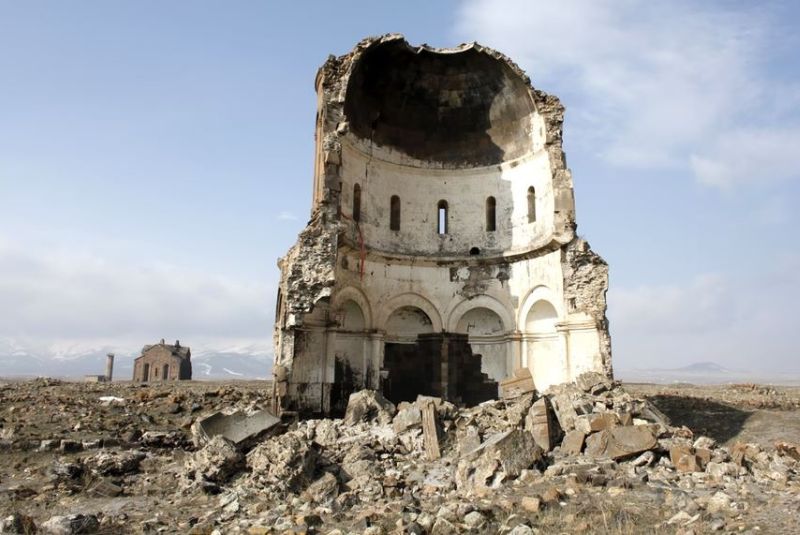
The most striking feature of Ani Ruins is its impressive collection of churches and cathedrals. The city was once home to over 40 churches, many of which are still standing today. The most famous among them is the Cathedral of Ani, which was built in the 10th century and boasts intricate carvings and beautiful frescoes. Other notable churches include the Church of St. Gregory and the Church of Surb Prkich.
Aside from its religious structures, Ani also has several other interesting ruins to explore. The city walls are particularly impressive, stretching for over three miles and featuring numerous towers and gates. Visitors can also see the remains of palaces, baths, and other public buildings that once made up this bustling metropolis.
Despite its rich history and stunning architecture, Ani Ruins remain relatively unknown to tourists visiting Turkey. This makes it an ideal destination for those looking to escape the crowds and discover hidden gems off the beaten path. With its haunting beauty and fascinating history, Ani Ruins is truly one of Turkey's most underrated historical sites.
2. Sumela Monastery
The Sumela Monastery, also known as the Monastery of the Virgin Mary, is a magnificent historical site located in the Altindere National Park of Turkey. This ancient monastery was built in the 4th century AD and has been a significant religious and cultural center for centuries. The monastery is perched on a steep cliff overlooking the Altindere Valley, providing breathtaking views of the surrounding landscape.
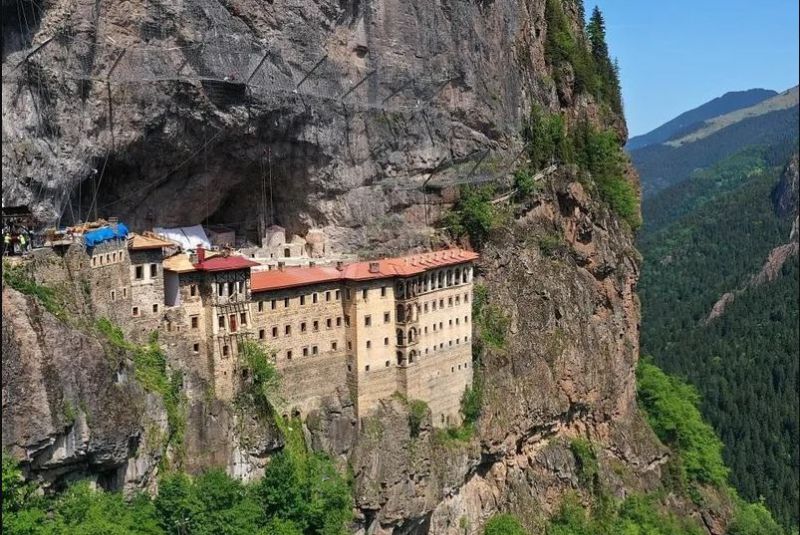
The Sumela Monastery is renowned for its stunning architecture and intricate frescoes that adorn its walls. The frescoes depict scenes from the life of Jesus Christ and other biblical figures, making it an important pilgrimage site for Christians. The monastery also houses a library that contains rare manuscripts and books dating back to the 9th century.
One of the most fascinating aspects of this historical site is its turbulent history. The Sumela Monastery has survived numerous invasions, wars, and natural disasters over the centuries. It was abandoned in 1923 during the population exchange between Greece and Turkey but was later restored in 2010 after years of neglect.
Visitors to this remarkable site can explore its many chambers, including a chapel, dining hall, kitchen, and living quarters for monks. They can also take a stroll through its beautiful gardens filled with fruit trees and fragrant flowers.
3. Hattusa
Hattusa, located in central Turkey, was once the capital of the Hittite Empire, one of the most powerful civilizations of the ancient world. The city was founded in the 17th century BC and reached its peak during the 14th century BC. It was a major political, economic, and cultural center of the region for over 400 years.

The city is known for its impressive fortifications, including massive stone walls and gates that protected it from invaders. The most famous of these is the Lion Gate, which features two stone lions guarding the entrance to the city. The gate is considered one of the finest examples of Hittite art and architecture.
Hattusa is also home to several temples and palaces that were built during its heyday. The most notable of these is the Great Temple, which was dedicated to the Hittite god Teshub. The temple features intricate carvings and reliefs that depict scenes from Hittite mythology.
In addition to its architectural wonders, Hattusa is also home to a vast collection of cuneiform tablets that provide valuable insights into Hittite culture and history. These tablets contain records of treaties, laws, religious rituals, and other important aspects of daily life in ancient Hattusa.
4. Aspendos Theatre
Aspendos Theatre is one of the most impressive and well-preserved ancient theatres in the world. Located in the Antalya province of Turkey, this magnificent structure was built during the Roman period in 155 AD by architect Zenon. The theatre was designed to seat over 7,000 spectators and was used for various performances, including plays, music concerts, and gladiator fights.

What makes Aspendos Theatre unique is its incredible acoustics. Even today, visitors can stand on the stage and speak in a normal voice, and their voices will be heard clearly by those sitting in the highest seats. This is due to the theatre's design, which includes a series of arches and columns that create perfect sound reflection.
The theatre also boasts stunning architecture with its towering walls made of limestone blocks. The stage area is adorned with intricate carvings and sculptures that depict various mythological figures. Visitors can also explore the backstage area where actors would have prepared for their performances.
Despite being over 1,800 years old, Aspendos Theatre still hosts performances today during the annual Aspendos International Opera and Ballet Festival. It's a testament to its enduring legacy as one of Turkey's most remarkable historical sites.
Finally!
Ultimately, visiting Turkey's historical sites is not just about experiencing their beauty and significance - it's also about supporting the ongoing efforts to preserve them. By doing so, tourists can make a meaningful contribution towards safeguarding Turkey's rich cultural heritage for generations to come.
Comment
Leave a Comment